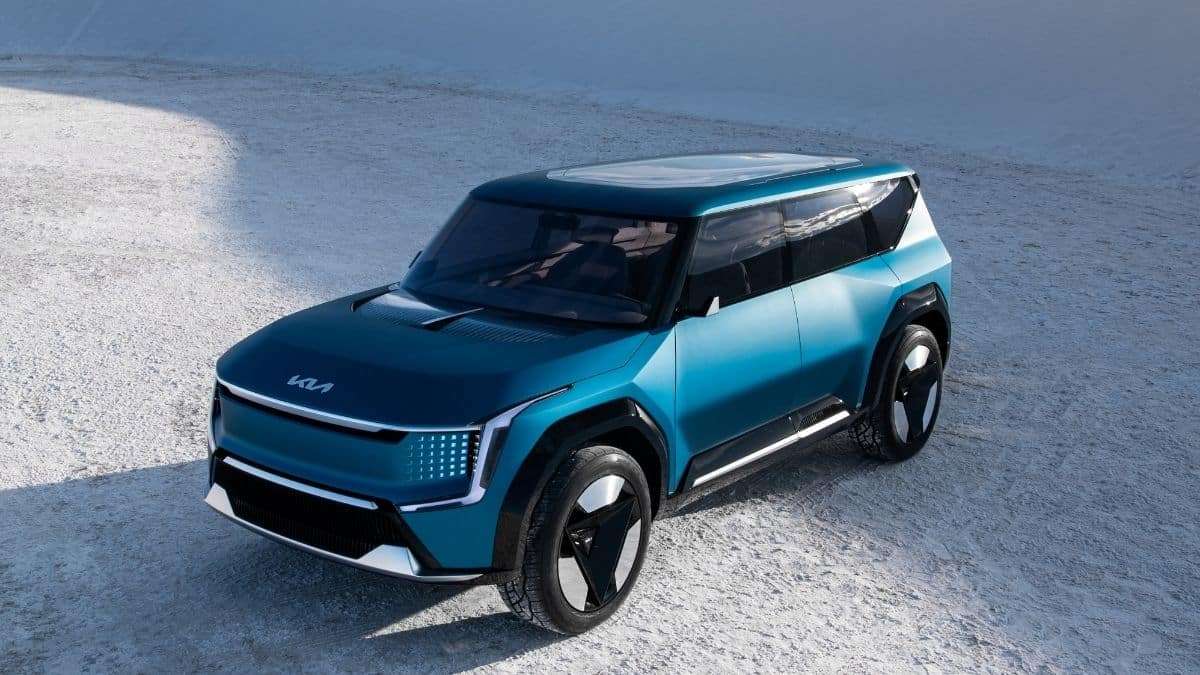This news is not too surprising considering the requirements of the recently passed Inflation Reduction Act (IRA) that incentivizes electric vehicles (EVs) and plug-in hybrids (PHEVs), but only if their batteries and components have a certain percentage originating in the U.S. or from its free trade partners, a percentage that increases over time. According to The Korea Economic Daily, Kia will convert part of its production line at its Georgia plant to produce the midsize EV9 electric SUV starting in 2024. Hyundai-Genesis is also moving production of its electric luxury GV70 SUV to its U.S. plant in Alabama for the same reason.
For anyone that may not be familiar with Kia’s forthcoming EV9, it is roughly the same size as Kia’s popular Telluride midsize SUV, and is supposed to have a 300+ mile range and capability of fast charging from 10-80% in 20-30 mins using a 350 kW charging station. Given the popularity of midsize SUVs in the U.S., and the relative lack of mainstream/non-luxury EVs in this vehicle class, Kia will likely have a hit on its hands and keeping up with demand may be its biggest problem. By moving production to the U.S. Kia’s EV9 may qualify for some or all of the federal incentives the IRA makes available and appears to be a primary motivation for Kia to move production to its Georgia plant. Kia may also be intending to address its recent EV sales declines and or reduce shipping costs and delivery times by manufacturing more of its plug-in vehicles in the U.S. I should point out here that, according to The Korea Economic Daily, Kia’s declining EV sales over the last several months has mostly been due to reduced supplies of automotive chips from German chipmaker Infineon Technologies AG.
While it may simply be coincidence that Kia’s EV shipments to the U.S. began declining around the same time the IRA was passed into law, the fact is that Kia must keep its EVs cost competitive with other mainstream brands in the U.S. Localizing production helps them stay competitive whether or not their vehicles are eligible for federal incentives, in full or in part. It is also likely that Kia’s U.S made EVs (and PHEVs, if they also end up being made here) will only qualify for half of the total available incentive because they, like many other brands, won’t be able to fully meet the evolving battery mineral and component requirements. The Hyundai Motor Group (which includes Kia) and the South Korean government are actively lobbying the U.S. government to revise the IRA, as are European automakers and government leaders. However, so far the White House is saying there are no plans to push back on congress to revise the law so that foregin automakers may have more equal footing with their American counterparts in the U.S. market, though President Biden did suggest the law could be “tweaked” to address similar concerns from European manufacturers and the French President, Emmanuel Macron.
Tweaks to the law suggest a conciliatory approach, for example finding some loopholes or offering up compensatory agreements in other sectors, instead of new or revised legislation. This journalist feels the real problem is that automakers were not given any realistic amount of time to begin moving production and the sourcing of more materials and components as per the guidance in the IRA. It simply cut most automakers out of the incentives, including U.S. manufacturers, cold turkey. If the purpose of the IRA was to reduce the volume of incentives flowing out of the federal reserves (in the short term, if not also long term), then it seems like it will succeed. However, if the purpose was to lower the price point of EVs for American consumers, and accelerate our move to zero and near zero tailpipe emissions vehicles, it isn’t going to help (at least not in the near term). This is because it takes years to build new factories and assembly lines, it takes years to find new mineral sources and partners who can provide adequate supply.
But what do you think? Should all automakers be given at least a year, or so, to move their manufacturing into the U.S. or its free trade partners (or become such a partner)? Is it more realistic and do you think it would help consumers by lowering prices? Please leave your comments and questions below.
Image provided by Kia.
Justin Hart has owned and driven electric vehicles for over 15 years, including a first generation Nissan LEAF, second generation Chevy Volt, Tesla Model 3, an electric bicycle and most recently a Kia Sorento PHEV. He is also an avid SUP rider, poet, photographer and wine lover. He enjoys taking long EV and PHEV road trips to beautiful and serene places with the people he loves. Follow Justin on Twitter for daily KIA EV news coverage.






Comments
I don't think he's going on
Permalink
I don't think he's going on very long trips lol
By he do you mean the Kia EV9
Permalink
In reply to I don't think he's going on by Joe truth (not verified)
By he do you mean the Kia EV9? What’s a long trip? As far as we know the EV9 should easily be able to take long trips of hundreds of miles per day using the growing network of fast chargers or even just using the charger many buyers will use at their homes or at places they drive to and leave cars parked for longer periods of time (work, campgrounds, shopping malls, rest areas, etc.).